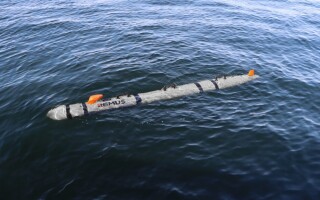New rotorcraft designs, silent operations are key goals in Army, Uber partnership
StoryOctober 15, 2018
Warfighters on missions and Uber passengers hitching rides will soon have something in common - both getting done thanks to what are essentially unmanned, flying cars. The U.S. Army Research Laboratory (ARL) and transportation company Uber are partnering to advance future vertical lift technologies to push forward the U.S. Army's modernization efforts.
Warfighters on missions and Uber passengers hitching rides will soon have something in common – both getting done thanks to what are essentially unmanned, flying cars. The U.S. Army Research Laboratory (ARL) and transportation company Uber are partnering to advance future vertical lift technologies to push forward the U.S. Army’s modernization efforts.
Officials signed a cooperative research and development agreement (CRADA), which aims to bring into the field a quieter unmanned aircraft with a unique rotorcraft design that can carry higher payloads.
Both the warfighter and the everyday Uber customers will see advances in unmanned aerial vehicle (UAV) designs, say the partners; such collaborations can help to address tech gaps such as having a quieter UAV that can fly around neighborhoods, or a stealth UAV that can operate in threat environments where silence is a must.
“The research that we will collaborate on with Uber will actually deliver unprecedented capability for quieter rotor systems in a unique configuration,” said Dr. Jaret Riddick, director of the U.S. Army Research Laboratory’s Vehicle Technology Directorate (VTD), in an Army release.
The collaborative efforts made possible by CRADAs present the defense industry with an easy way to work with ARL, according to ARL documents. Funding of the first agreement will be equally shared by Uber and ARL.
This particular CRADA research effort also fulfills the needs of the U.S. Army’s modernization efforts to “Build a More Lethal Force.” Army documents state its intention to continue these types of partnerships, which it says will enhance both governmental and private efforts to build next-generation designs: “Future vertical lift will integrate situation awareness, supervised autonomy, advanced manned/unmanned teaming, and scalable and tailorable lethal/nonlethal fires and effects.”
By working with Uber Elevate – an Uber business unit that aims to bring air taxis or uberAIR to the masses – ARL researchers will not only focus on reducing the noise of the aircraft, they will also work on rotorcraft designs that were previously developed with the University of Texas at Austin (UT Austin).
Plans are underway to test and analyze these designs and to uncover opportunities such as the one between Uber and UT Austin’s stacked “co-rotating prop-rotor testing effort, which may lead to ground-breaking discoveries to support Army Modernization Priorities,” Army officials state.
Uber is also partnering with LaunchPoint Technologies (Goleta, California), a technology company that focuses on developing novel electric motors. “LaunchPoint’s design approach will lead to motors best suited to power eVTOL [electrical vertical take-off and landing] technology with stacked co-rotating propellers,” according to Army documents. “In the future, all three entities will exploit the experimental data and lessons learned from stacked co-rotating rotor testing. The result will be more predictive models and higher-performing next generation co-rotating propellers.”
Army officials want UAV designs that are lighter but yet can carry larger payloads – all in a craft that needs no runway. Uber plans to launch uberAIR by 2023 in its initial U.S. Elevate cities: Dallas and Los Angeles.
The official kickoff of the Uber/ARL partnership was held in August 2018 at UT Austin.
The ARL/VTD’s Dr. Riddick welcomed attendees at the UT event: “It is a confirmation that ARL is pushing forward the state of the art,” Riddick said. “ARL and Uber Elevate subject-matter experts have met before at ARL at Aberdeen Proving Ground and at the Elevate Summit in ARL West, but this kickoff is a formal start to the relationship in ARL South that we hope will motivate multiple collaborations on technology of mutual interest that will benefit the future warfighter.”
These government/private joint efforts are key for the development of new and innovative tools for the warfighter. “The greatest benefit [of this project] is collaboration with the ecosystem of industry and academic partners associated with Uber Elevate to accelerate development of Army-relevant technology; going from the discovery phase into the hands of the warfighter faster,” Riddick added.





